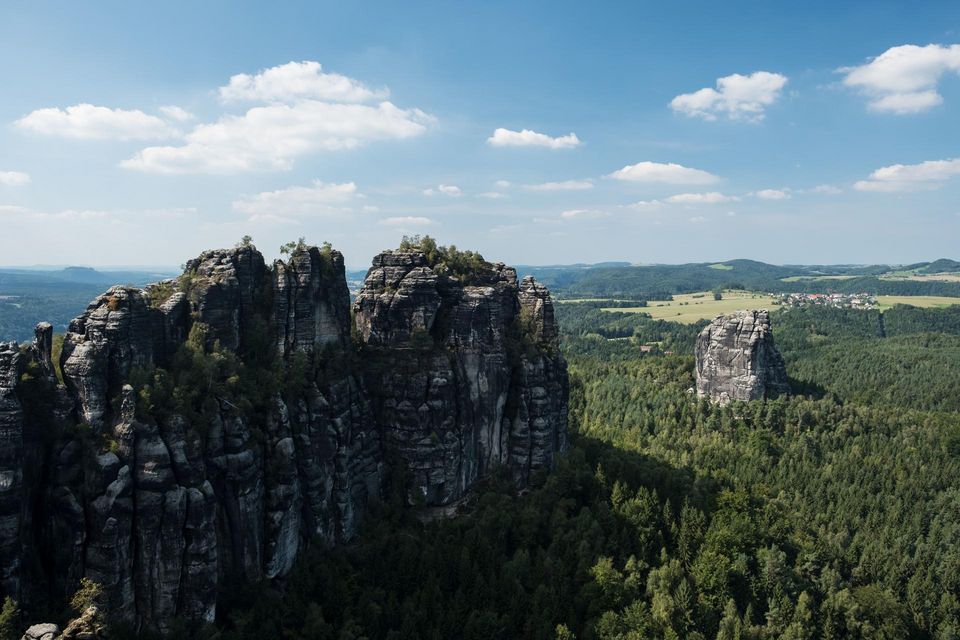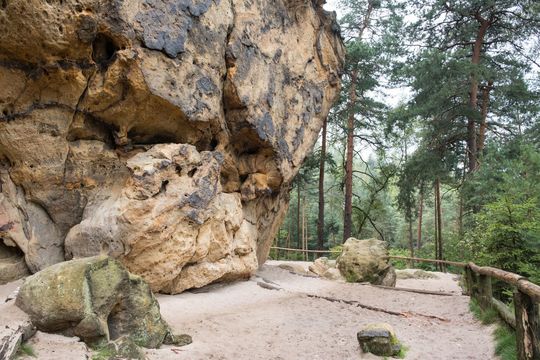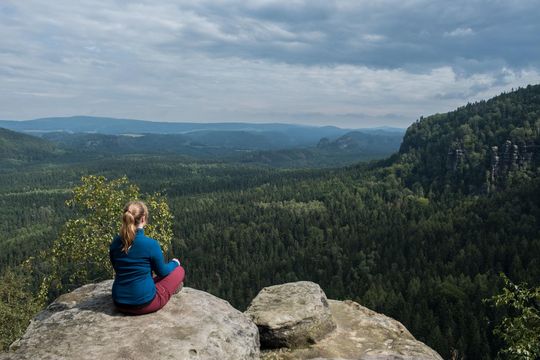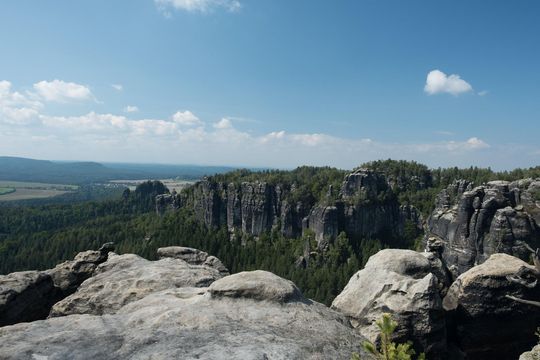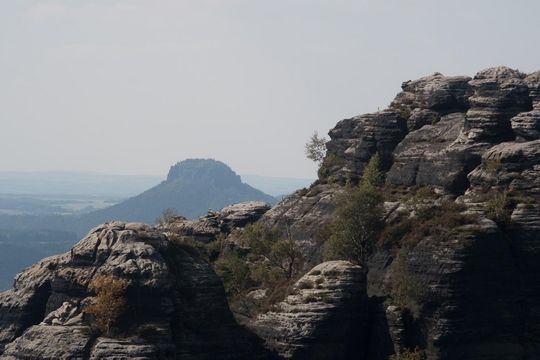Discovering Germany
Saxon Switzerland
Do you have to travel to the Alps to enjoy exciting hikes? Of course not! Germany has many hilly and mountainous regions where you can go on picturesque hiking tours. There is something for everyone. Sächsische Schweiz (Saxon Switzerland), south-east of Dresden, is one of those regions. And despite its name, it does not have anything directly to do with the tiny Alpine republic.
A rocky trip
Weighed down with gear, we’re travelling on the S-Bahn from Dresden Central Station to Bad Schandau. It’s a beautiful summer day, not too hot, but warm enough for shorts and a shirt. As well as our hiking equipment, we’re carrying a large rucksack with everything we’ll need for a night outdoors. A warm sleeping bag, a camping mat, a change of clothes, a gas cooker and enough food for two days. But most importantly, enough water.
We are heading for the spectacular landscapes of Saxon Switzerland near Dresden. The upland region has attracted visitors for several centuries. It was named Saxon Switzerland in the 18th century by two Swiss artists who felt reminded of their home country.
Along narrow paths and steep rocky crags
Saxon Switzerland is easy to reach by S-Bahn. Just a 44-minute ride south-east of Dresden along the picturesque Elbe river lie the Elbsandsteingebirge (Elbe Sandstone Mountains). The range is several million years old. You first have to cross the Elbe to pick up the trail. Luckily, there’s a ferry that regularly carries hikers from one side to the other. Then you have to make a steep ascent up towards the Schrammsteinweg trail. We want to climb the and also see a few gorges, or valleys between the rocks.
The Schrammsteine are a stretched-out group of rocks that look as if someone had simply dropped them into the landscape. The formation is very impressive and towers 300–400 metres into the sky. You have to ascend a steep narrow staircase between the rocks and even climb a bit, but the view at the top is gorgeous. It’s worth taking a break here, for example on the Kleine Bastei.
„It’s an area of great natural beauty, as well as a great opportunity to unwind and enjoy the fresh air.“
Laura Constanza Murcia Mora from Colombia
Interview
Laura from Colombia describes her trip
Overnighting in a Boofe is a speciality in Saxon Switzerland
Today, Saxon Switzerland is a paradise for climbers. And it was climbers who popularised the tradition of sleeping under the stars in the national park. There are now 58 official overnighting spots, or Boofen as they are known. Sleeping outside anywhere else is prohibited.
So what does a Boofe look like? Well, it is located under an overhanging rock and filled with sand. A small marker in the stone indicates that you are allowed to spend the night outdoors here. The most important things for overnighting in the open-air here are a camping mat and a warm sleeping bag. A small gas cooker to boil water for soup or tea is also useful. You are not allowed to light fires in the Saxon Switzerland National Park.
Up with the first rays of dawn, you can complete your hike with a descent back down to Bad Schandau.
Conclusion
In line with this topic
Discovering Germany
